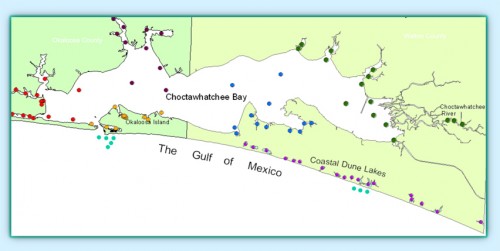
A look into the Choctawhatchee Basin Alliance water monitoring program
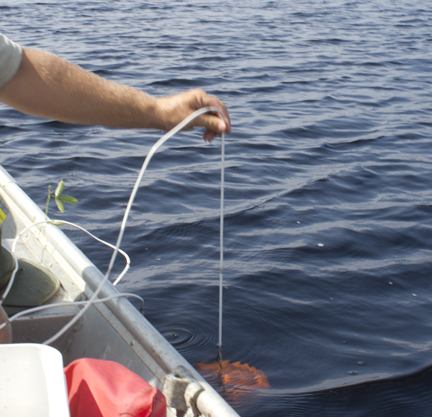
This is the second of a four part series on the Choctawhatchee Basin Alliance of Northwest Florida State College (CBA).
It is easy to understand why most of us enjoy living in Northwest Florida. The beautiful beaches, creeks, rivers and the Choctawhatchee Bay offer extraordinary opportunities to fish, explore, swim and enjoy living in the diverse ecosystems that surround us.
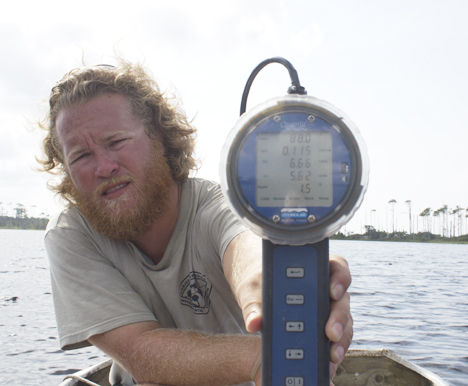
shows the results of temperature, dissolved oxygen, pH, salinity, and oxygen saturation from a Hydrolab Quanta Water Quality Monitoring System. Lori Ceier/Walton Outdoors
Have you ever wondered who watches over the health of our beautiful waterways? It’s the Choctawhatchee Basin Alliance of Northwest Florida State College. CBA has many facets that help restore, educate, monitor and research a large geographic area called Choctawhatchee basin watershed. The watershed itself stretches from the headwaters of the Pea River in Alabama, south to the Choctawhatchee River to the Gulf of Mexico, and includes the tributaries and coastal dune lakes.
CBA is committed to sustaining and providing optimum utilization of the Choctawhatchee Basin watershed, providing opportunities for citizens, educators, and technical experts to promote the health of Choctawhatchee watershed.
The CBA engages in four core programs: education, monitoring, research, and restoration. Today we will take a peek into their water monitoring program.
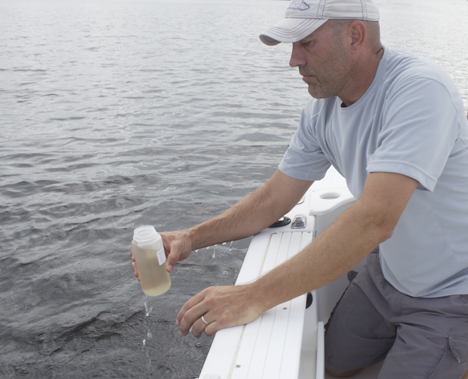
Monitoring the waterways of the Choctawhatchee basin is a complex process. The CBA works with the University of Florida’s Florida LAKEWATCH program to conduct monthly water quality monitoring of 142 locations throughout the watershed, including Choctawhatchee Bay, Choctawhatchee River, and Walton County’s coastal dune lakes.
This collaboration allows them to establish baseline water quality data for our local water resources. This data is used to help identify areas of poor water quality, determine the causes of water quality degradation, and identify solutions to improve water quality throughout the basin. CBA’s data are used by local municipalities as well as State and federal agencies to manage and regulate our waters.
Citizens are usually instructed on their waterbody during a two to four hour training session, which includes the selection and/or identification of sampling stations and water sampling procedures for both LAKEWACH and the CBA hydrolab. After receiving instructions, the volunteers sample their water body once a month.
The program is conducted almost wholly by dedicated volunteers. They take surface- and bottom-level readings of the following parameters at each station: temperature, dissolved oxygen, pH, salinity, oxygen saturation, and water clarity. They also collect water samples, which are analyzed by the Florida LAKEWATCH program for nutrient concentration (total nitrogen and total phosphorus) and algae content (chlorophyll).
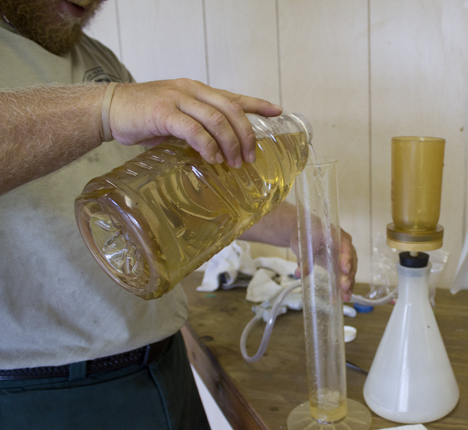
After collecting the samples, the volunteers process the water through a filtration system and keep the samples frozen until delivered to a LAKEWATCH drop off location.
CBA produces an annual report for Walton County on the coastal dune lakes. The latest summaries are available by clicking here.
Florida LAKEWATCH produces annual reports for each individual waterbody (each lake or creek, and various sections of the bay). That data is available by clicking here.
Interested in learning more about the program or volunteer opportunities? Click here to read more.
Community support aids CBA in acquiring funding that will make a positive change in our environment for the long term.
Learn more at: http://basinalliance.org/
109 South Greenway Trail, Santa Rosa Beach, FL 32459
Email: CBA@nwfsc.edu
Phone: (850) 200-4171
